Salamanca, Guanajuato 作者: 来源: 发布时间:2021-11-18
1.Population and Area
Pop: 260,759 (city)
Area: 24.7 km2 (city)
Elev: 1721 masl
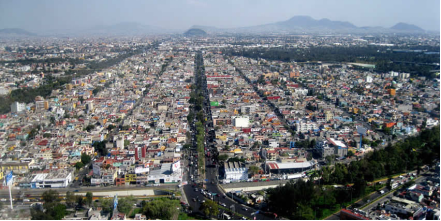
2. Natural geography
Nature and weather
Flora and fauna
The area presents different types of vegetation, such as oak forests, mezquital, chaparral, highlighting a species of biznaga that is threatened, likewise the huizache.
In the area there are birds such as the road eagle, the red-tailed hawk, subject to special protection, and the black heron considered a rare species. There are registered species subject to special protection such as the rattlesnake, mountain viper, false coral, Alicante and the chameleon; as well as the neo volcanic frog, the red squirrel and the tlalcoyote also known as badger.
Köppen Classification: Humid Subtropical Climate
This climate is characterized by relatively high temperatures and evenly distributed precipitation throughout the year. This climate type is found on the eastern sides of the continents between 20° and 35° N and S latitude. In summer, these regions are largely under the influence of moist, maritime airflow from the western side of the subtropical anticyclonic cells over low-latitude ocean waters. Temperatures are high and can lead to warm, oppressive nights. Summers are usually somewhat wetter than winters, with much of the rainfall coming from convectional thunderstorm activity; tropical cyclones also enhance warm-season rainfall in some regions. The coldest month is usually quite mild, although frosts are not uncommon, and winter precipitation is derived primarily from frontal cyclones along the polar front.
The Köppen Climate Classification subtype for this climate is "Cfa". (Humid Subtropical Climate).
The average temperature for the year in Salamanca is 66.7°F (19.3°C). The warmest month, on average, is May with an average temperature of 73.4°F (23°C). The coolest month on average is January, with an average temperature of 59.2°F (15.1°C).
The highest recorded temperature in Salamanca is 102.4°F (39.1°C), which was recorded in May. The lowest recorded temperature in Salamanca is 25.7°F (-3.5°C), which was recorded in January.
The average amount of precipitation for the year in Salamanca is 27.8" (706.1 mm). The month with the most precipitation on average is July with 6.8" (172.7 mm) of precipitation. The month with the least precipitation on average is February with an average of 0.2" (5.1 mm). In terms of liquid precipitation, there are an average of 73.9 days of rain, with the most rain occurring in July with 16.4 days of rain, and the least rain occurring in February with 1.0 days of rain.
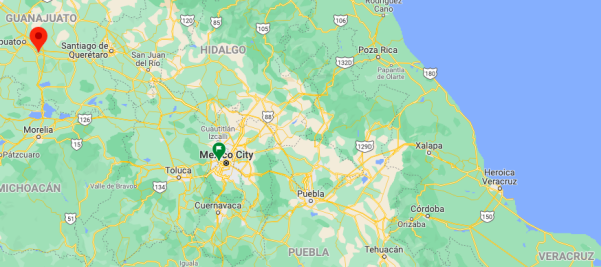
Getting there and around
Get there
By plane – While the city itself doesn't have an airport, it can be served by the Bajío International Airport (BJX), which serves the entire state of Guanajuato; the airport itself is about 50 kilometers away.
By car – The quickest way to get from Mexico City to Salamanca is to drive which costs $500 - $800 and takes 3h 10m. The distance between Mexico City and Salamanca is 250 km. The road distance is 296.3 km.
By bus – The cheapest way to get from Mexico City to Salamanca is to bus which costs $430 - $600 and takes 4h 46m. The journey, including transfers, takes approximately 6h 24m. Mexico City to Salamanca bus services, operated by ETN, depart from Mexico Norte station.
Riseshare – Check out Blabla Car's carpooling service for rideshare options between Mexico City and Salamanca. A great option if you don't have a driver's license or want to avoid public transport.
https://www.rome2rio.com/s/Mexico-City/Salamanca-Mexico
Car Rental – To explore Mexico’s provincial towns and cities—including its beach locations and the scenery and attractions near them— consider renting a car for your visit. Having your own car will give you more flexibility than using public transport options and, in some cases, offer you access to places which are otherwise difficult to visit without the use of a car.
COVID19 – International entry into Mexico from United States
Allowed for: All visitors arriving by air. Mexico land borders are closed to non-essential travel
Restricted for: There are no current restrictions.
Get around
Local Buses – Local buses and mini-buses (combis or micros) are available locally for a fraction of the cost of a taxi around town. You need to speak Spanish to be able to ask for directions or ask the driver to tell you where to get off.
Taxis – Taxis in most of Mexico’s towns and cities are not metered, so agree your price before you get in. Taxi travel is very affordable in Mexico, in comparison to the USA, Canada and Europe, and so provides a viable means of public transportation in Mexico. Your hotel can arrange taxis for you; some post their rates on a board in the lobby; taxi hotel rates are usually higher than cabs you hail off the street. If you speak Spanish, you will have a distinct advantage and be able to negotiate a price with the driver.
Uber is expanding rapidly across Mexico and now offers services in cities across the country, including: Mexico City, Toluca, Cuernavaca, Puebla, Querétaro, León, Aguascalientes, San Luis Potosí, Guadalajara, Monterrey, Hermosillo, Tijuana, Mexicali, and Mérida. Uber has been adding Mexican cities to its network every year, check for availability when you arrive at your destination in Mexico.
Cabify and Didi are also developing and currently operate in cities including Mexico City, Toluca, Monterrey, Puebla, Querétaro and Tijuana. Check for availability in the city you are visiting.
These services offer people with smartphones a way to book a cab through a mobile app for a pre-agreed price. Fares are comparable with Sitio type cabs, and sometimes trade at a premium to this when local demand increases.
https://www.mexperience.com/transport/taxi-travel-in-mexico/#51
3. ECONOMY
GDP: 31,093 M MXN (2010)
https://imco.org.mx/ciudades2010/ciudades/69_Salamanca.html
4. Industry characteristics
The petrochemical industry is the primary one in the city, giving rise to numerous companies and bus transport services available for employees. The strategy was to boost the creation and development of the so-called "industrial corridor" of the Bajio.
The largest Pemex refinery in Mexico is located in Salamanca, and it is the 11th largest crude oil refinery in the world.
Also noteworthy is CFE Thermoelectric, a source of significant employment in the municipality.
In Feb 2014, Mazda Motor Company opened its North American plant outside of Salamanca. At full production, the plant is expected to produce up to 240,000 vehicles per year and employ over 4,600 workers. About 30 percent of the vehicles sold in the United States will be sourced from this factory.
Key project: Taiwanese footwear company arrives in Salamanca
A footwear company from Taiwan would come to the entity, announced Mauricio Usabiaga Díaz Barriga, Secretary of Economic Development in Guanajuat. The name of the company is Feng Tay.
Feng Tay is a family-owned business in Taiwan that produces more than 110 million pairs of shoes per year and supplies 35 percent of all Nike's global supply.
The investment of this company will be of one billion pesos and will imply the creation of 5,000 direct jobs.
https://www.visionindustrial.com.mx/industria/noticias/nuevas-inversiones-para-salamanca-guanajuato
5. Attractions
Temple of the Lord of the Hospital
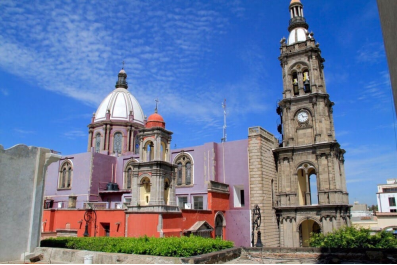
Opposite the main garden and next to the City Hall is the neoclassical Templo del Señor del Hospital (Temple of the Lord of the Hospital). There, in the 16th century, there was a hospital for Otomí people founded by Michoacán Bishop, Vasco de Quiroga.
The current parish was consecrated until the last century, in 1924, and today houses the Black Christ of Salamanca, known as the Cristo del Hospital (Christ of the Hospital).
The Christ, reason for countless visits throughout the year, was made with corn cane more than 450 years ago in Pátzcuaro, Michoacán. It’s 1.80 meters high, weighs 13 kilograms, arrived when Salamanca was still known as Xidoo and acquired the Cristo del Hospital name when years later the hospital was installed at the service of the natives.
A legend tells that initially the Christ image was white and acquired the black color to camouflage himself in the middle of the night. This, after a battle where the Spanish defeated the natives and the latter decided to take the image to Jilotepec.
Dreaming, one of them had an epiphany: the Christ asked to be left where he would be able to be permanently. Thus, he took it away and hid it near a river. When returning to continue the path, he discovered that the Christ had changed color to hide from enemies.
That’s why the image remains in Salamanca and maintains its black color.
https://www.visitmexico.com/en/guanajuato/salamanca/temple-of-the-lord-of-the-hospital
Nopal Circuit
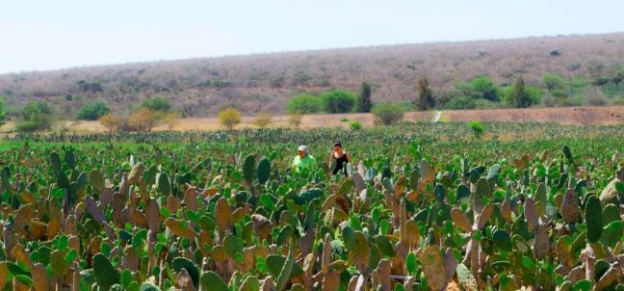
Discover the Valtierrilla municipality nopal plantations aboard a “tractopal”—a trailer pulled by a tractor. As you pass, data that you didn’t know about this cactus so representative of Mexican cuisine will be revealed.
You will also learn about the industrial and packaging process of this plant increasingly adding new followers in the United States and Canada, countries now lucky enough to receive it even in the comfort of their markets.
At the foot of the fields you can taste freshly cut nopales and cooked right there to calm the craving and continue with the tour. Then you’ll arrive at a cosmetic factory nopal-made, where you’ll see the production processes and the infinite benefits for the skin or hair this cactus brings. In addition, you can prepare your own soap.
The third point of the journey is an organic garden, where it is possible to talk with planting responsibles about caring and harvesting. The plantations are chemical-free and at the end you can make your own stuffed stalk.
During the unusual trip, a musician with a guitar in hand will perform enlivened songs and invite the group to sing while the nopal deep green colors the fields.
https://www.visitmexico.com/en/guanajuato/salamanca/nopal-circuit
Parroquia Antigua de Salamanca (Former Parish of Salamanca)
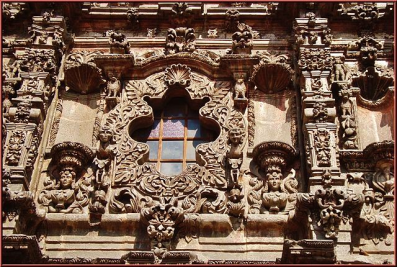
In front of the Plaza de los Niños Héroes you’ll find the Parroquia Antigua de Salamanca which, it is said, is one of the first churches built in this city.
Baroque outside and neoclassical inside, you can immediately identify it by its Churrigueresque facade and its incomplete tower, which of course has more than one explanation.
On the one hand, it’s said that it was too heavy and to prevent collapse they decided to wait before continuing the construction. Another theory points to the lack of budget. Whatever the reason, this has become one of its hallmarks.
Another detail is that the floor is covered in mesquite wood, a material formerly used in Guanajuato buildings. It’s said that this site is the only one from the colonial era that preserves its original floor, so upon entering you’ll know that you’re standing over centuries of history.
For some time, it was a school and library instead of functioning as a temple. After the Cristero war, the authorities decided to give new uses to religious centers, and this was no exception. Years later, at the end of the conflict, it was used again for what it was built, remaining that way until today.
https://www.visitmexico.com/en/guanajuato/salamanca/parroquia-antigua-de-salamanca-former-parish-of-salamanca
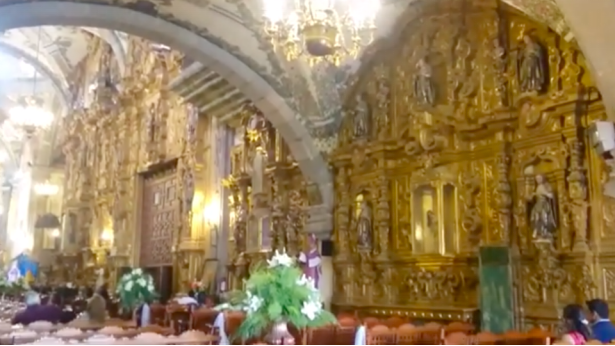
Salamanca Guanajuato México, recorrido por el centro histórico
https://youtu.be/sJVef3MxfwA
6. History
The history of Salamanca, as a legally organized town, begins on January 1, 1603, when Viceroy Don Gaspar de Zúñiga y Acevedo and Fifth Count of Monterrey, originally from Salamanca, Spain, decides, on August 16, 1602, to grant the Mercy of foundation requested by Bartolomé Sánchez Torrado and to support the Spaniards and the children of the Spaniards who were working the lands of the Bajío because from the years 1540 or 1550 they began to establish "estancias", mainly of livestock and little agricultural exploitation , by a few Spaniards and colonized by small groups of Otomi Indians.
In this way, on January 1, 1603, Bartolomé Sánchez Torrado (born in Spain and not in the State of Guanajuato as erroneously indicated in other texts), Diego Beltrán Camacho, Andrés García de Valencia, Captain Diego de Valencia met. Come on, Juan de Cuéllar, Baltasar González, Diego Fonseca de Oliva, Alonso Rodríguez Manríquez, Luis de Fonseca, Martín García Torrado, Alonso Hernández Romero, Diego Romero, Juan López Ibáñez, Cristóbal de la Cruz Sarabia, Francisco Encal, Jorge Maldonado, Martín Domínguez, Francisco Gómez, Cristóbal de Estrada, Diego Aguado Calderón, Juan de Chavarría, Juan de Abella, Juan Fonseca, Antón Gómez Casilla, Juan de Espinosa Alderete, Martín García de Sosa Domingo Hernández, to elect the first four councilors, Juan de Cuéllar, Baltasar González, Diego Hernández de Oliva and Juan de Chavarría. Which elected two Mayors, Andrés García de Valencia and Bartolomé Sánchez Torrado. Thus the foundation of Salamanca was declared, and its first council was elected, made up of four councilors and two ordinary mayors, and the life and existence of the Villa de Salamanca began legally, that January 1, 1603. The "typical costume" in those years consisted of the man: with a wide-skirted sollate hat and a high crown, a red or navy blue tie around the waist, and cross-strap huaraches. While the woman wore: on her right shoulder a clay jug, a blanket blouse, a shawl tied to the right shoulder, a long skirt of cotton cambaya fabric.
Independence
During the days 24 and 25, in Salamanca, some Spaniards are apprehended, forty thousand pesos are collected from the Augustinian convent; Albino García and his cousin Pedro, Father Gracilita and Andrés Delgado "El Giro" are commissioned to revolutionize as guerrilla leaders in different parts.
Don José María Luis Mora, an illustrious and trustworthy historian, says "The most notable leader of the insurgents of that time was Albino García who was born in Cerro Blanco located on the road to La Tinaja and Baltierra el Grande, administered by the Villa de Salamanca."
Tomasa Esteves was born in Salamanca, in 1788, and the report of Agustín de Iturbide tells the Viceroy that "she was the main agent in procuring the desertion, which has considerably been verified." She was apprehended on August 5, 1814 and "Tuesday 9 was passed by arms, continues Iturbide, saying The seductive woman whose head has been placed in the public square, "the execution of Tomasa Esteves took place on the south corner of the streets currently called Revolución and Río Lerma. When Andrés Delgado appeared before the Cura Hidalgo, he had just turned 18, as is stated in the book of baptisms of Indians in the parish of Salamanca, on November 7, 1792 and he was born in a house facing the south side of the chapel of Santa María Nativitas, rebocero by trade.
On March 23, 1821, the Colonel passed through Salamanca on his way to Guanajuato with all the military forces of the region under the new flag of the Three Guarantees; Religion, Union, Independence, raised and sworn by Iturbide and Guerrero. Later he returned by that same road, waiting to be called to Mexico, that date can be considered as the end of the War of Independence in Salamanca.
In 1895 the Congress of the State of Guanajuato by decree promoted the town of Salamanca to the category of city.
Mexican Revolution
In April 1915, Colonel Francisco Villa gathered all his people, approximately 8000 soldiers, in Salamanca to go to Celaya where he was defeated by the forces of General Álvaro Obregón. Once the Villista forces were defeated, they passed through Salamanca again, pursued by the Army, Obregón's soldiers took Salamanca and stayed for 8 days. Then they went to the city of León Gto. In July of the same year, Salamanca is ravaged by General Fierro, one of the strong men of Villa. A few days later, the Carrancista army arrived in Salamanca under the command of the state governor and Salamanca was stained with blood with the shooting of 12 people in the middle of the main garden.
7.Contact Information
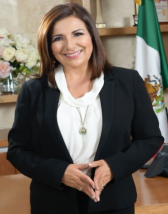
City Mayor: María Beatriz Hernández Cruz
Phone number: +52 (464) 641 4501, ext. 1012
E-mail: beatriz.hernandez@salamanca.gob.mx
Facebook: https://www.facebook.com/BettyHdezCruz
Twitter: https://twitter.com/BettyHdezC
Website: https://www.salamanca.gob.mx
Govt. Office Address: Portal Octaviano Muñoz Ledo s/n, Zona Centro, Salamanca, Gto.
